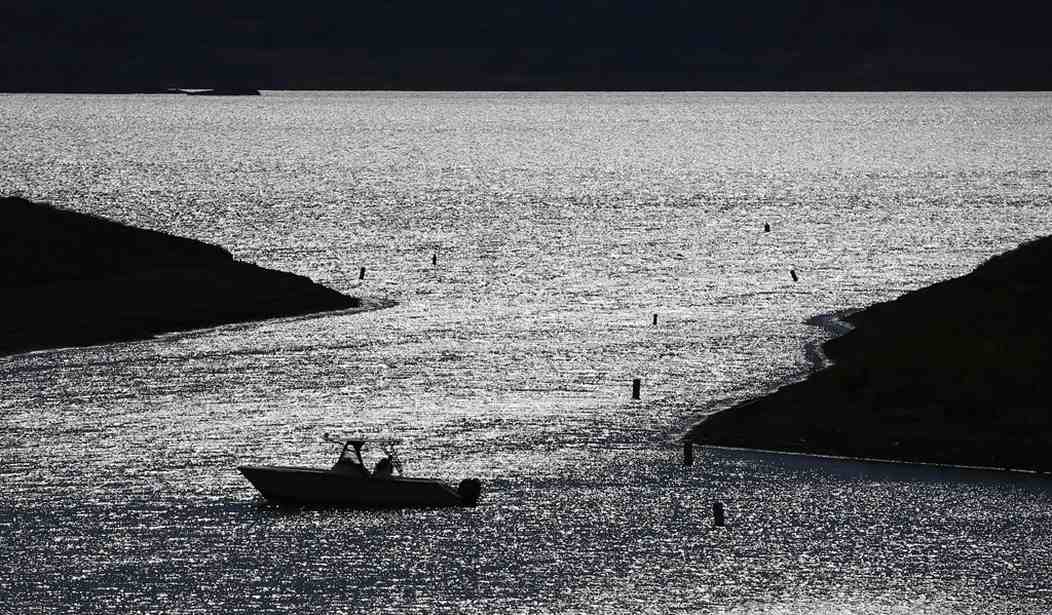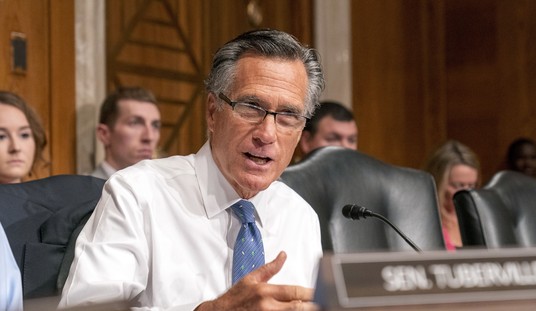Whenever there is a new record set, whether rain, hurricane, drought, etc., those in the climate change alarmist camp seem to be quick to point to global warming as the cause and make more dire predictions regarding the future—even when there are other documented reasons and even when hard data (not models) disputes the claim. Such is the case with Lake Mead. On May 20, the federal Bureau of Reclamation announced that the nation’s largest reservoir reached an all-time low. The current level slipped below the previous record set in June 2015.
Despite reports of the mismanagement of the important water resource, USA Today responded to the news by proclaiming: “Due to a long drought and climate change, Lake Mead’s water levels continue to fall.”
Brad Udall, a senior water and climate research scientist at Colorado State University, and brother to former Colorado Senator Mark Udall and cousin to New Mexico Senator Tom Udall, declared: “This problem is not going away and it is likely to get worse, perhaps far worse, as climate change unfolds.” According to the Desert Sun, he added: “Unprecedented high temperatures in the basin are causing the flow of the river to decline.”
Udall previously stated: “Climate change is water change. The two go hand in hand. Heat drives the water cycle. …You have to invoke temperatures to explain the current drought.”
While Udall’s statements are dramatic and coincide with the climate crisis narrative his better-known family members espouse, they do not, according New Mexico hydrologist Mike Wallace, reflect actual temperature and stream flow records in the Colorado River Basin. (I highlighted Wallace’s work on ocean acidification in December 2014.)
Both Wallace and Udall claim to be experts in the hydrology and climatology of the western U.S. However, Wallace told me: “I’m the only hydrologist who is publishing moisture and temperature forecasts in reaches of the Upper Colorado River, years in advance, with consistently high accuracy.”
Recommended
Wallace, who counts the city of Santa Fe as one of his forecasting business clients, pioneered the discovery that moisture patterns in his area of study—which overlaps Udall’s—are deeply anchored to ocean indexes and sunspot numbers. He boldly asserts: “There is no correlation of CO2 emissions history to the moisture time series that I have evaluated. Also, for the same stations that I review there is little or no correlation of temperature to streamflow. Rather, ocean drivers can account for changes in temperature and moisture in this region, and those drivers appear to be driven themselves by solar cycles.”
While Udall believes temperatures are rising and causing reduced streamflow into Lake Mead, Wallace disputes the premise. Wallace says he has three years of successful forecast exercises to back up his claim that, in his study areas, “temperatures are hardly trending in any direction and, in any case, those temperatures are not correlating to streamflow.”
Wallace’s study regions include many of the tributaries of the Colorado River such as the San Juan River and the Green River—both of which are sourced in the Rocky Mountains. He says: “There haven’t been any unusually low streamflow rates or unusually high temperatures in my area of focus. In fact, flows are going up, not down, compared to two and three years ago and some temperatures are actually trending down over the same recent time frame.”
Using his proprietary method (patent pending) with more than 200 accurate forecasts, and applying to areas near the nexus of the Upper Rio Grande and the Upper Colorado Rivers, Wallace is projecting 3-4 years of generally increased water flows, followed by 3-4 years of generally decreasing moisture (drought). He posits that his innovations help municipalities, flood control authorities, irrigation districts, and resource management agencies better plan for future moisture and temperature conditions.
Wallace has written and presented several papers on his discoveries. But he continues to experience resistance from major peer-reviewed journals to publish any of his findings. The troubles likely lie in his demonstrations that emissions are uncorrelated to climate in his study regions. In any case, scientific papers are often considered as precursors to actual applications, and Wallace already has a working, proven application. He is receiving steady and growing recognition from the hydroclimate community. In April, he was an invited presenter to the 30th Annual Rio Grande Basin Snowmelt Runoff Forecast Meeting, sponsored by the USDA SNOTEL network and attended by top regional hydroclimate scientists from agencies including the National Weather Service (NWS), the U.S. Geological Survey (USGS), and the National Oceanic and Atmospheric Administration (NOAA).
If Wallace is correct, and he has a successful climate forecast record to back up his projections, Udall can’t also be right. Wallace believes most of Udall’s climate assertions, such as the claim that regional temperatures explain everything about the drought, are too simplistic. He also expresses concern regarding Udall’s use of the term “drought.” “To accept those Lake Mead statements as factual,” Wallace said, “anything short of an epic flooding event, must be an epic drought event.”
The natural processes that Wallace has distilled down to a working forecast system, don’t, in any way, appear to fit the crisis narrative that Udall and many climate “authorities” perpetuate. You should ask if we really need more funding, bigger departments, and greater public anxiety to fix something that, at least, in the western U.S., appears to wholly be explained by natural cycles.
























Join the conversation as a VIP Member